- Author Matthew Elmers [email protected].
- Public 2023-12-16 21:49.
- Last modified 2025-01-24 09:17.
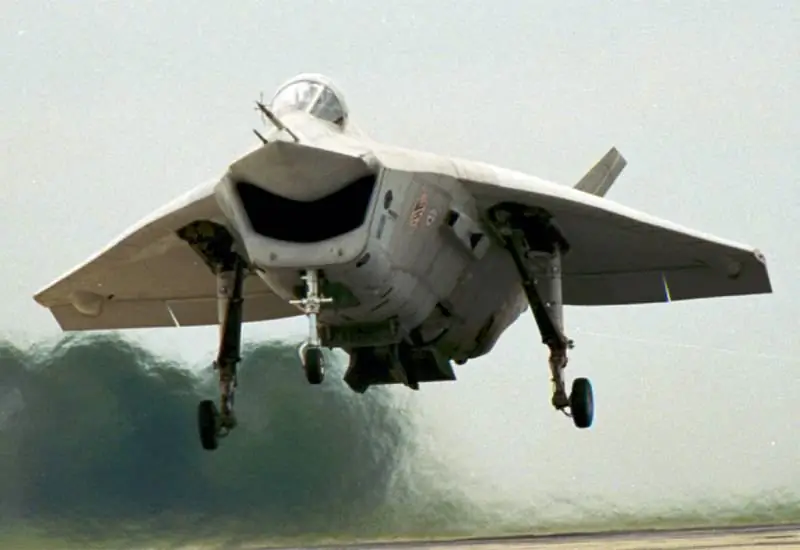
In the 21st century, the development of the American "X-series" continued. If in the past these were, as a rule, purely experimental aircraft intended for various kinds of research and achievement of record results, then recently the index "X" in the designation began to receive prototypes, which are subsequently adopted for service.
On September 18, 2000, the X-32A flew from the Boeing factory airfield in Palmdale to the flight test center of Edwards AFB. This aircraft, developed under the JSF program (Joint Strike Fighter - a promising strike fighter), was built to participate in a competition for a 5th generation light fighter, which was supposed to replace the aircraft: F-16, A-6, A-10, F-14, F / A-18 and A / V-8. The JSF fighter was supposed to become a real all-rounder and exist in at least three versions (including SVP) and meet the conflicting requirements of various customers.
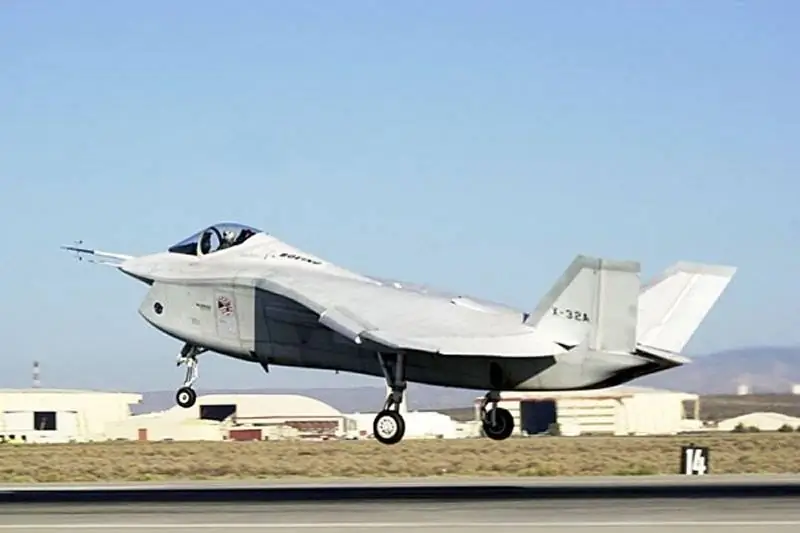
Boeing X-32A
The Kh-32A had a very extraordinary, if not ugly, appearance. Due to the very large bucket-shaped air intake located below the cockpit, the aircraft received the nickname Sailor Inhaler (English Marine Inhaler), or "Eater of sailors" in free translation. The wing with a sweep of 5 ° along the leading edge was made very thick to accommodate the fuel tanks. The fuselage had two compartments for the internal placement of weapons, which should have reduced the radar signature of the aircraft. In many ways, the appearance of the Kh-32A is associated with an attempt to create a fighter with a short takeoff and a vertical landing on the basis of a single basic design. Despite its unusual appearance, the Kh-32A demonstrated good flight performance. The maximum speed at high altitude is 1930 km / h (1.6 M). Ceiling - 20,000 m. Combat radius - 1,100 km. The maximum combat load is 5000 kg.
During tests at the Edwards airbase, the X-32A made 66 flights and spent more than 50 hours in the air. Due to the fact that the requirements of the Navy in terms of boarding the ship turned out to be difficult to fulfill, many changes had to be made to the aircraft design.
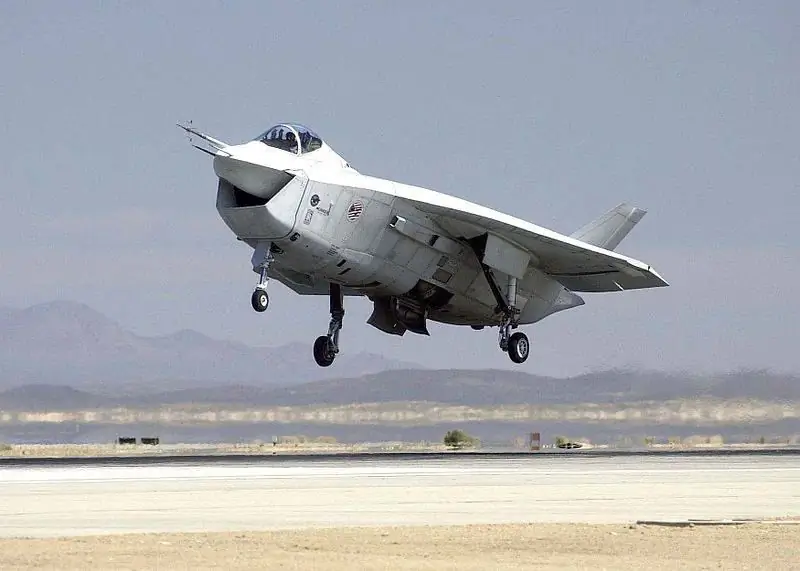
X-32V
Following the Kh-32A, the Kh-32V, built in the SVP version, entered the tests. The test results of this machine were disappointing. The plane was clearly overweight and could not take off vertically. As a result, Boeing, which had not built fighters since the early 1930s, lost the competition. The reasons for the defeat were: too large a share of previously untested technical solutions, a significant part of which turned out to be irrational, the high cost and complexity of the project. The design data of the aircraft could not be confirmed, and its price turned out to be excessively high.
The more successful rival of the Boeing X-32 was the Lockheed Martin X-35, which later became the F-35 Lightning II. The X-35 prototype was originally designed as a short takeoff and vertical landing fighter rather than an attack aircraft. Behind the cockpit there is a fan connected by a shaft with a lifting and sustaining motor, which also has a rotary nozzle. The use of an axisymmetric adjustable rotary nozzle instead of a flat one gave a saving of more than 180 kg of mass and an increase in thrust both in the GDP modes and in cruise flight. This, in turn, made it possible to increase the mass of the payload. Airplanes intended for the Air Force have fuel tanks in place of the fan, which makes their flight range approximately 400 km longer.
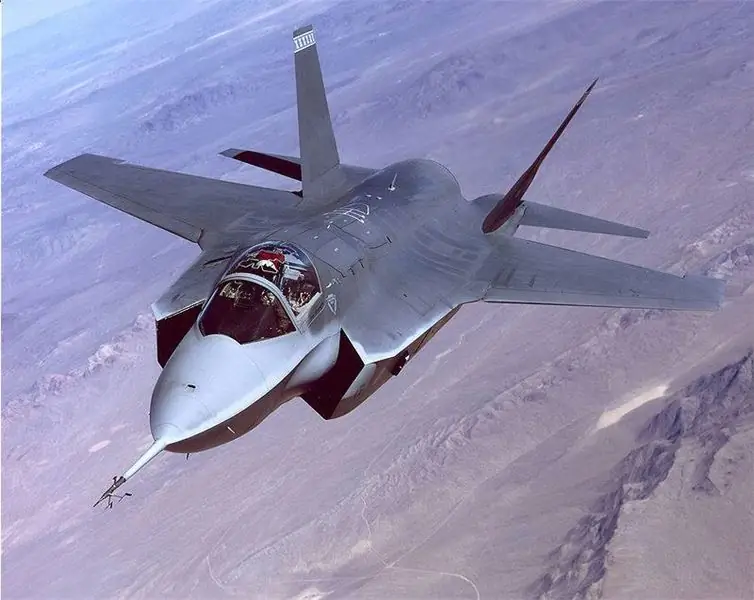
X-35 during the first flight over Edwards AFB
On July 20, 2001, during the final tests of the X-35B, in order to demonstrate high flight performance and superiority over the X-32, it rose vertically by 150 m, after which it switched to level flight, exceeded the speed of sound and landed vertically.
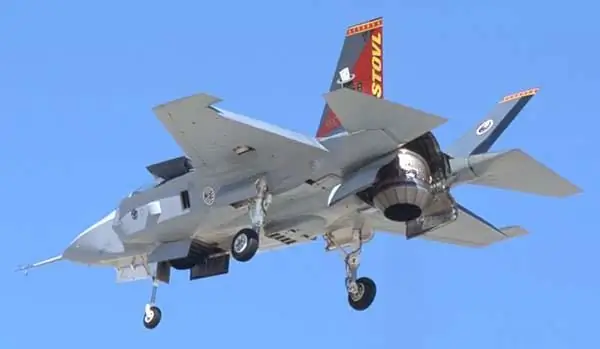
After passing the test cycle, it was decided to build three main modifications. The F-35A is the simplest of all variants for the United States Air Force. This model should also become the main one supplied for export. For the USMC and the British Navy, the F-35В was created - with the possibility of a short takeoff and vertical landing. The F-35C is intended for deployment on American aircraft carriers. This carrier-based aircraft, with an increased wing and tail area compared to other options, can carry a large payload.
To date, the total cost of the F-35 project has exceeded $ 400 billion. At the same time, within the framework of the joint financing program, the share of Great Britain is $ 2.5 billion, Italy must contribute $ 1 billion, the Netherlands $ 800 million, Canada $ 440 million, Turkey $ 175 million, Australia $ 144 million, Norway $ 122 million and Denmark $ 110 million. Orders for the acquisition of the F-35 were also received from Israel and Japan. Operation of the first F-35B at the US ILC began in the summer of 2015. As of March 2017, over 230 units have been built. In total, taking into account export orders, more than 3,000 F-35 fighters should be produced.
To investigate the possibility of creating a high-speed, stealthy fighter, the specialists of the McDonnell Douglas company have created the X-36 unmanned experimental vehicle. Since McDonnell Douglas became part of Boeing at the start of testing, the aircraft is currently referred to as the Boeing X-36.
The model, devoid of a vertical airframe, was built at a scale of 28% of the size of a possible fighter. The flight is controlled by radio from a ground station. At the same time, a picture from a video camera installed in the nose of the X-36 is transmitted to the pilot's helmet, made with elements of virtual reality. The generation of direct control commands is carried out by an on-board computer that controls the digital automatic stabilization system.
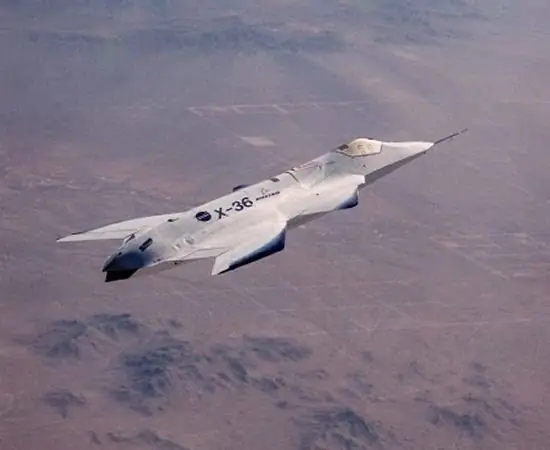
Boeing X-36
On May 17, 1997, the X-36 broke away from Edwards Air Force Base for the first time. A total of 36 flights were carried out. The device, weighing 590 kg, is equipped with an engine with a thrust of 318 kgf. On trials, the X-36 reached a speed of 380 km / h and demonstrated excellent maneuverability.
The results obtained during the tests of the X-36 were planned to be used when creating a prototype of the X-44 fighter. This aircraft with an extended delta wing and without vertical and horizontal tail was to be controlled using a variable thrust vector.
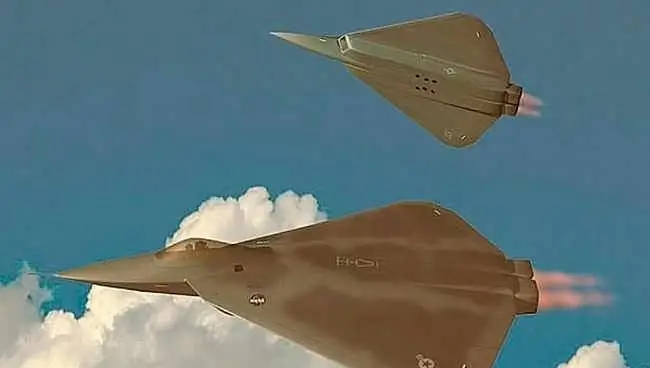
Alleged view of the X-44 fighter
The aircraft, also known as "MANTA", according to the design data, surpassed in speed, maneuverability, flight range and stealth the already adopted F-22A. However, after the cessation of funding, the project was officially closed in 2001. But a number of researchers believe that the developments on the X-44 can be used in the creation of a 6th generation fighter.
On April 7, 2007, flight tests of a prototype of the unmanned space shuttle Boeing X-37A took place at Edwards Air Force Base. This aircraft, which closely resembles the manned Shuttle, was dropped from the White Knight carrier aircraft. Tests have shown the efficiency of the control system and the possibility of autonomous landing. However, upon landing on the surface of a dried-up lake, the device was damaged. After repairs, the Kh-37A made two more successful descents from a height.
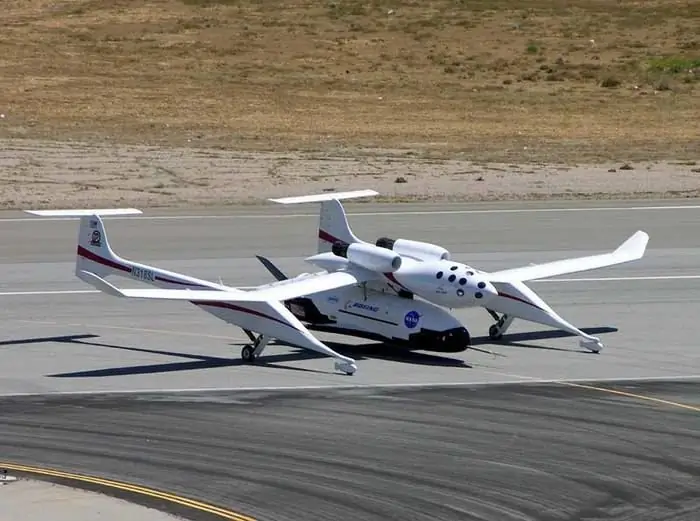
Aircraft carrier White Knight with a suspended Kh-37A
Initially, the project was under the jurisdiction of the NASA Space Agency, but even before the start of flight tests of the prototype, it was handed over to the military, after which all the details regarding the X-37 were classified.

On April 22, 2010, the Atlas V launch vehicle launched the X-37V into orbit. His successful return to Earth occurred on December 3, 2010. After that, the device performed three more space missions, having spent more than 2000 days in space. The X-37B is the smallest and lightest orbiting spacecraft to have completed space flight. The vehicle has a launch mass of 5000 kg, and it is about 4 times less than the manned Space Shuttle.
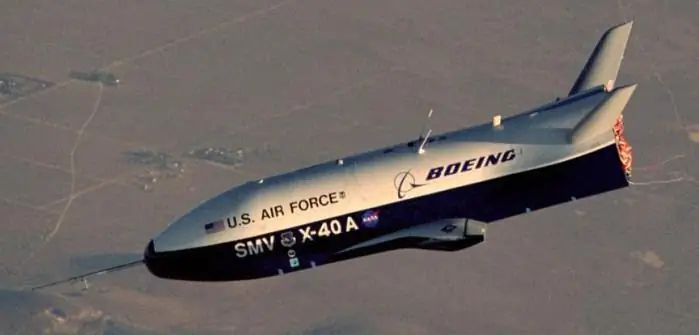
X-40A
A number of technical solutions used in the Kh-37V were tested on the Kh-40A. In particular, control and navigation systems were tested, and the aerodynamics of a controlled gliding descent was investigated. Tests of the Kh-40A lasted from August 1998 to May 2001.
The X-38 Crew Return Vehicle was designed by NASA as a prototype of a spacecraft crew rescue vehicle. The first reset of a vehicle controlled by an autopilot, which worked out a course based on signals from a satellite positioning system, took place in 1999.

Dumping the X-38 from the B-52H
According to the concept of rescue from orbit, adopted by NASA, the descent vehicle was supposed to accommodate 7 people and operate in a fully automated mode, without the participation of the crew. After the device glided to a given area, a parachute system was triggered in the dense layers of the atmosphere, ensuring a safe landing speed. However, due to financial constraints and NASA budget cuts, the project was canceled in 2002.
In May 2002, a Boeing X-45A UAV took off from the runway at Edwards Air Base for the first time. It was the first American drone made using low radar and thermal signature technology. The device is intended mainly for operations over territory well covered by air defense systems.
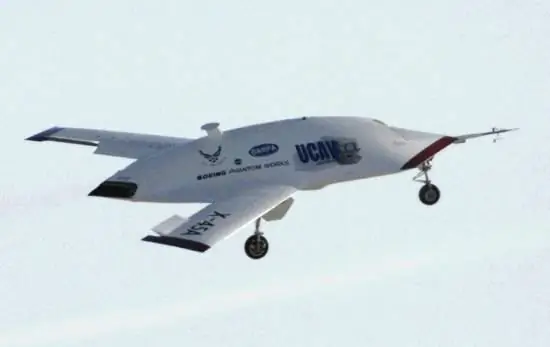
X-45A
In accordance with the terms of reference, the X-45 UAV must have a combat radius of at least 500 km, a maximum speed of 950 km / h and a ceiling of 9000 m. The time spent in the target area is at least 30 minutes, and the combat load in the internal compartments is up to 1360 kg. The drone can be delivered to remote areas of hostilities C-5 Galaxy and C-17 Globemaster III.
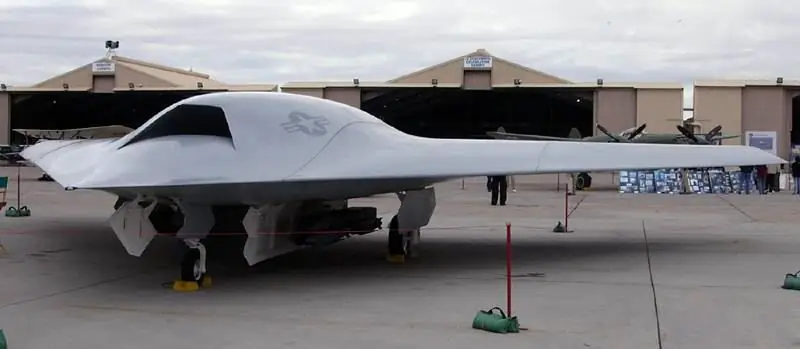
X-45S
In 2006, a more advanced modification of the X-45C appeared. However, all information on this model is classified and its prospects are not clear. It is possible that the project has been canceled due to the adoption of the RQ-170 Sentinel. The designation X-46 received the deck variant of the previous model.
On March 27, 2004, the first flight of the X-43A high-speed unmanned vehicle took place. This hypersonic drone was created at the Langley Research Center for NASA. Like many other experimental high-speed rocket planes "X-series", this device with a ramjet engine rose into the air under the wing of the strategic bomber B-52H, which took off from the runway at Edwards airbase.

The X-43A was part of the Hyper-X project to study the possibility of reaching speeds up to 15 meters at an altitude of 30,000 meters or more. The experimental Kh-43A weighing 1.3 tons and a length of 3.6 m has a load-bearing hull with a small delta wing with a span of 1.6 m and two keels. To protect against heat, the nose of the aircraft is made of tungsten alloy, the leading edges of the wing and keels are made of heat-resistant carbon, the body and bearing surfaces are made of titanium alloy with ceramic thermal protection. The X-43A engine runs on hydrogen. To accelerate the X-43A, the first stage of the Pegasus rocket is used.
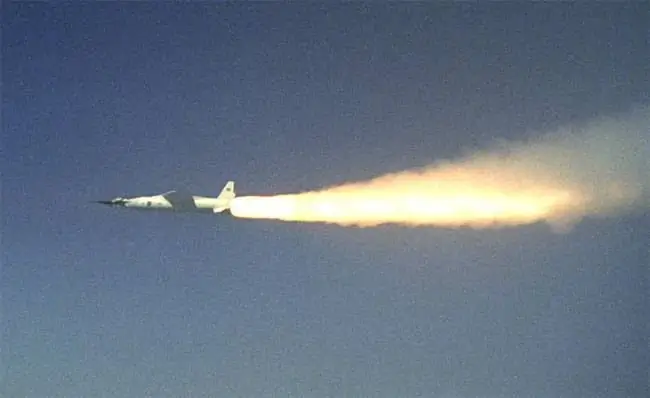
In total, three copies of the Kh-43A were built. During the first launch, which took place on June 2, 2001, 13 seconds after the booster stage was turned on, the device lost control and fell into the ocean. During the second test, the upper stage delivered the Kh-43A to an altitude of 29,000 m, after which the main engine was launched, and the experimental one-time model accelerated to a speed of 7401 km / h (6, 83 M). On the third instance, launched on November 16, 2004, after reaching an altitude of 33,000 m, it was possible to obtain a speed of 10,617 km / h (9.6 M). Although on the basis of the X-43A it was planned to create the following modifications, differing in the propulsion system, these plans were not implemented, and the data obtained were used in the design of other structures.
By order of Northrop Grumman, aircraft designer Burt Rutan, famous for creating futuristic and record-breaking aircraft, built a prototype of the X-47A Pegasus stealth UAV. The device was presented to the general public in July 2001, and the first flight was successfully completed in February 2003.
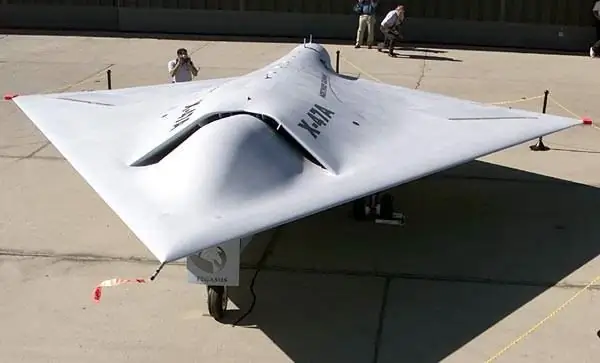
X-47A Pegasus
"Pegasus" without a tail unit looks like an arrowhead. According to information published in open sources, the X-47A is powered by one Pratt & Whitney JT15D-5C turbofan engine with a thrust of 1447 kg. The speed characteristics are not reliably known, it is only said that the UAV has a high subsonic speed. The service ceiling exceeds 12,000 meters, the range is more than 2,700 km.
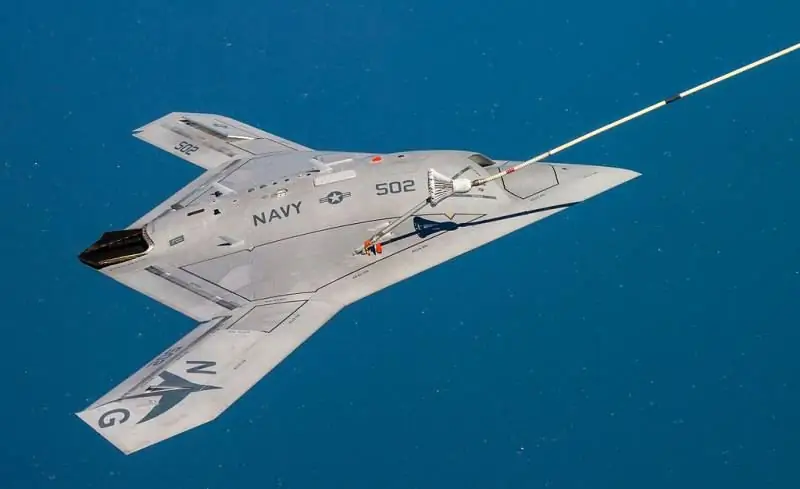
The process of refueling in the air Kh-47V
In December 2008, the presentation of the X-47B modification took place. After the completion of the test cycle at Edwards, the device landed on the aircraft carrier George Bush for the first time on July 10, 2013. To be based on the aircraft carrier, the X-47B is equipped with a folding wing. In April 2015, the X-47B performed the first ever aerial refueling of a UAV in a fully automatic mode.
Boeing is currently designing a flying wing transatlantic passenger airliner. It is assumed that the new aircraft will surpass the Airbus A380-700 in terms of fuel efficiency by 30%. For this, an unmanned model X-48V was created. The first apparatus of such a scheme, the Kh-48A, appeared back in 2000, but due to problems in the control system, it never took off.
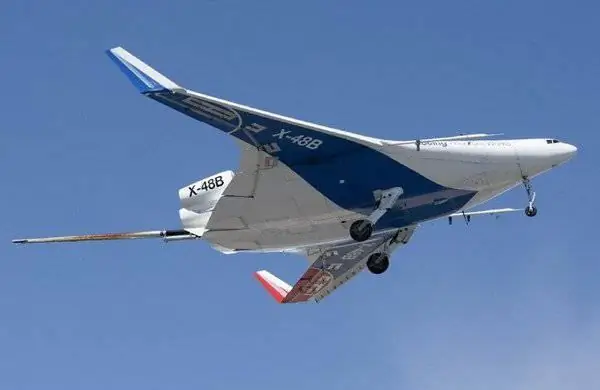
Boeing X-48В
During the flight tests of the Kh-48V, which began on July 20, 2007, the concept's performance was confirmed. From August 2012 to April 2013, tests of the X-48C unmanned model continued. The device reportedly showed good handling.
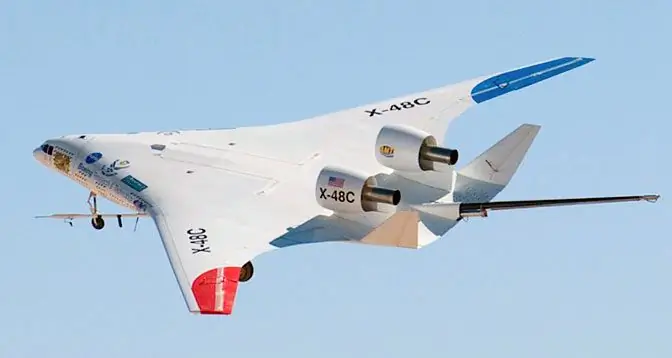
X-48S
In total, the X-48C made 30 flights. According to the representative of the Boeing company responsible for testing the X-45 models, this scheme has great prospects. With a significantly higher fuel efficiency and a reduced noise level, such aircraft during takeoff, landing and other low-speed flight modes can be controlled as efficiently as conventional aircraft. In addition to a passenger airliner, it is planned to create a military transport, a tanker aircraft and an AWACS.
About 10 years ago, the United States announced the concept of PGS (Prompt Global Strike), according to which the American armed forces should be able to deliver a non-nuclear strike anywhere in the world within an hour from the moment of making a decision. For this, it is planned to use ICBMs and SLBMs with high-precision conventional warheads, as well as sea- and air-based hypersonic cruise missiles.
In 2009, tests of the Boeing X-51A Waverider cruise missile began at Edwards AFB. The first launch from a B-52N bomber took place on May 26, 2010. During the tests, a ramjet engine created by Pratt & Whitney accelerated the rocket to a speed of 5 M. for safety reasons, the missile was remotely detonated.
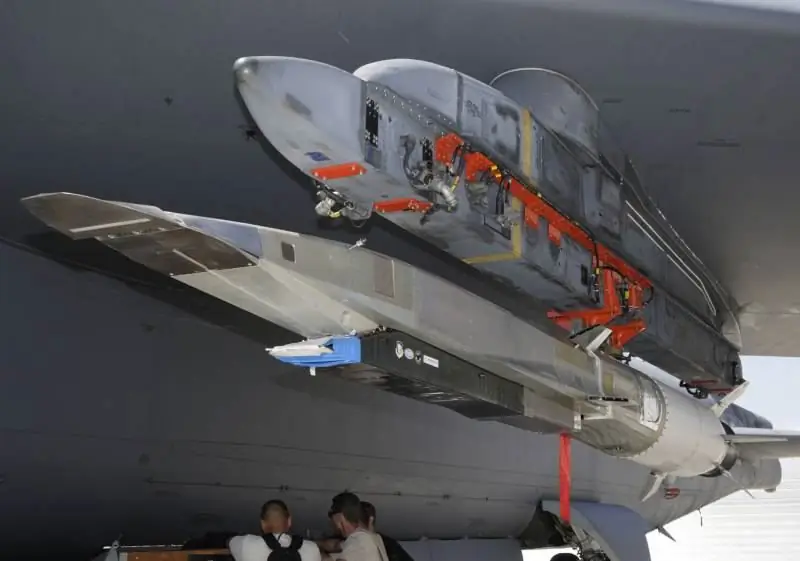
Boeing X-51A under the wing of B-52H
The tests carried out in the spring of 2011 were unsuccessful: at first the upper stage did not start, then it could not be dropped, after which the rocket became uncontrollable and fell into the ocean. The tests in August 2012 were also unsuccessful, due to loss of control, the missile collapsed in the air.
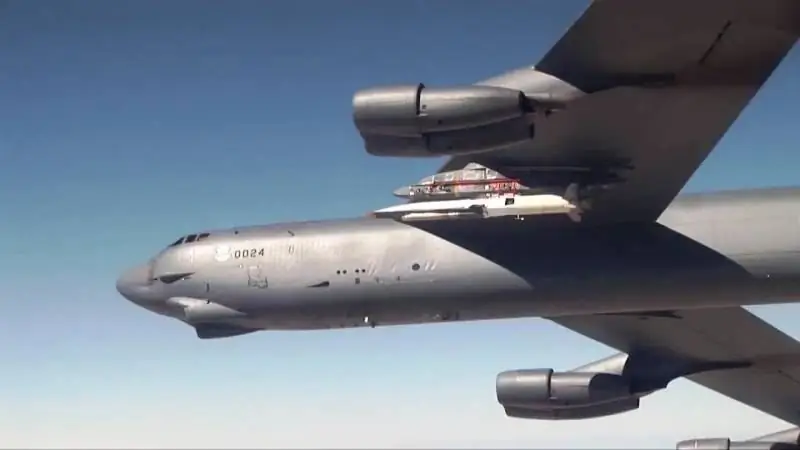
In May 2013, it became known about the successful launch of the X-51A. The missile dropped from the B-52H, which took off from the Edwards airbase, reaching an altitude of 18,000 km, developed a speed of 5.1 M. In six minutes, the X-51A flew a distance of 426 km. Although the US military and representatives of military-industrial corporations will no longer release data on tests of hypersonic cruise missiles, there is no doubt that work in this direction continues.
On July 26, 2013, a Lockheed Martin X-56A modular UAV took off from one of the unpaved runways at Edwards Air Base. This research apparatus is designed to collect information on the influence of various aerodynamic schemes on handling and to study active flutter.
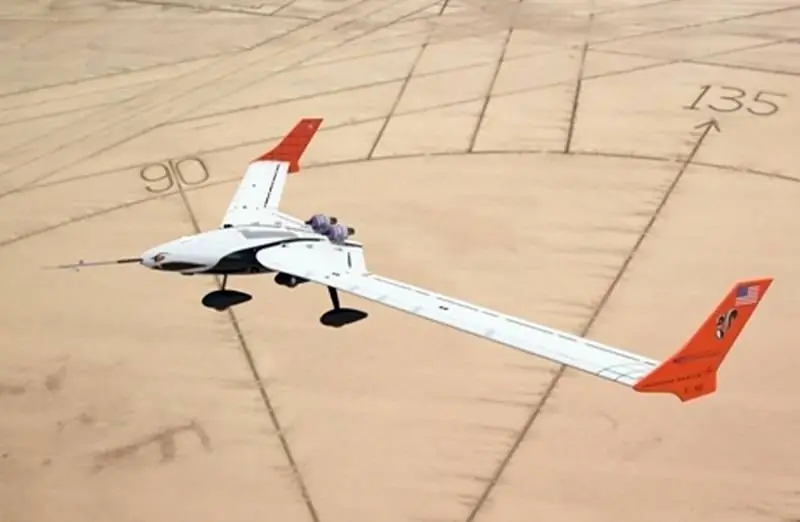
X-56A over the surface of the dried lake Rogers
For testing, two unmanned aerial vehicles were built with a length of 2.3 meters. Each Kh-56A, which had four sets of replaceable wings, was lifted into the air using two compact JetCat P400 turbojet engines with a thrust of 395 kN each. During tests in level flight, a maximum speed of 225 km / h was reached. On November 19, 2015, during testing of a flexible wing to suppress flutter, the first flight prototype fell onto an unpaved runway and was damaged. The data obtained during 16 research flights is used in the creation of new unmanned reconnaissance vehicles.






